|
|

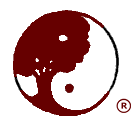
The Development of
|
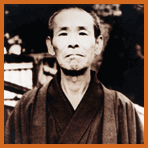
|
I developed Jin Shin Do® based on years of scholarly research, spiritual guidance, and my experiences with hundreds of clients. One way that Jin Shin Do® departs from Jin Shin Jyutsu® is by emphasizing classic Chinese acupuncture theory -- Strange Flows, Organ Meridians and Five Elements. (More accurately, this is a departure from JSJ as it is now taught in America, since my research in Japan indicated that Jiro Murai knew the meridians and channels of acupuncture theory.) Another important difference is that Jin Shin Do® is Bodymind Acupressure®. It integrates Reichian theories about emotions and attitudes related to the 'segments' with acupressure theories about how the emotions relate to the meridians (as described later). JSD also includes QiGong (breathing and exercise techniques). |
Over the past couple decades in the U.S., Jin Shin Jyutsu® has become characterized by the use of a very light touch. In developing Jin Shin Do® acupressure, I retained the firm, direct pressure which I originally experienced in treatments from Mary, but her system of points and flows is not based on acupuncture theory, as Jin Shin Do® is. Jin Shin Do® classes have increasingly been designed to develop exactness of point location and the optimum angle of pressure for each point, whereas Jin Shin Jyutsu® teaches that it is enough to be in the area of the point. Both are 'two hands' techniques, with both hands usually holding different points. In Jin Shin Do®, the fingers of one hand hold a 'local point' -- a point in an area of tension, pain or armoring -- while the other hand holds one or more 'distal points.' Though distant from the problem area, these points facilitate its release because of functional or energic relationships. Generally, the local and distal points are held on the same side, and then the same points are held on the other side.
The Journey of a Lifetime
My first introduction to what would later be called acupressure (and still later 'Oriental Bodywork Therapy,' and even later 'Asian Bodywork Therapy') was in 1970, when I learned some Do-In (simple self-treatment) from Jacques de Langre (who wrote the first books on Do-In in English), at a Macrobiotic summer camp in Washington. I and my then-husband, Ron Teeguarden, were en route to Los Angeles, to study Macrobiotics at the 'Kushi House.' I became a cook there and at the Erewhon warehouse, and wrote a macrobiotic cookbook that was published in 1971. I was first introduced to the concept of Ki or Qi (energy) by Michio Kushi, and it was at the Kushi House that I first received Shiatsu and acupuncture -- the latter from French acu-therapist Jean-Claude Thomas, whose bodymind focus intrigued me.
Shiu Wan Wu, a female acupuncturist from Hong Kong with forty years of experience, was an important mentor in 1972-74. While I received acupuncture from her, I read Wilhelm Reich and practiced Co-counseling. From 1972-1973, I was a research assistant for a student suicide prevention project at the American Institute of Family Relations, where my job was writing and sending information to colleges on setting up peer counseling programs. This project director was Dr. Paul Popenoe, who had been instrumental in starting the California Marriage, Family and Child Counselor license which I obtained in 1983 (now called Marriage and Family Therapist), and who wrote, 'Can this marriage be saved?' in Ladies Home Journal! Early in the journey which led to my developing Jin Shin Do®, acupressure and psychology were thus intertwined.
As I became increasingly intrigued with acupressure and its psychotherapeutic effects, I found that Los Angeles in the seventies was a good place to be, because many acupuncturists then emigrating from China and Korea landed on the West Coast. Koreans with whom I studied included Se Han Kim in 1975, Qigong master Sung Jin Park in 1975-1976, and Johng Kyu Lee in 1977. In 1978-1979, I organized and took additional classes from French acu-therapist Jean Claude Thomas and from Se Han Kim. From 1976-1978, I also took a lengthy correspondence course from Shiu Wan Wu's teacher, Kok Yuen Leung, who greatly enhanced my understanding of the traditional Chinese view of the emotions and their relation to the meridians.
The high point of this study was a three month research trip to Japan in 1976 -- just a few months after opening the 'Acupressure Workshop.' (It was to survive our absence - barely - and remain in existence a memorable five years, first in West L.A. and then in Santa Monica, serving as a meeting place for people as well as a teaching center for acupressure and related arts. However, it did not long survive my divorce from Ron Teeguarden in 1979 and my move to mile-high Idyllwild in 1980.)
In Japan, I studied Jin Shin Jitsu with Dr. Haruki Kato, experienced Shiatsu from Namikoshi at the 'Nippon Shiatsu Gakko,' was particularly fortunate to interview and give a JSD session to Japanese acupressurist Katsusuke Serizawa, M.D. (who developed the Tsubo technique), and had the fun of learning the Wada figuring technique.
Dr. Kato was fascinated with Western chiropractic techniques. Accordingly, he regarded the 26 main JSJ points as 'joint points,' or points where the energy around joints becomes blocked. He talked about two sets of meridians in the body -- one which acupuncture used, and another which Jin Shin Jitsu used. At the time, I thought that sounded unnecessarily complicated, but perhaps he was referring, respectively, to the organ meridians and the muscle meridians. According to Kato (who regarded himself as the world's only living master of Jin Shin Jitsu), some of the JSJ points were in different locations than I had learned from Mary. Dr. Kato said that Jiro Murai had had several ways of working with the meridians, but had not taught all of this, and that the way I was beginning to work with the meridians was similar to one of his methods. This gave me confirmation about the direction my work had been moving, after studying acupuncture theory along with point functions and locations.
The Jin Shin Jyutsu points were presented to me by both Dr. Kato and Mary as being points of the Major Central, Major Vertical, Minor Diagonal and Fatigue Flows - which I came to believe were basically the eight 'Strange Flows' (or 'Extraordinary Meridians') of acupuncture. My research in Japan confirmed this connection between the four main energy flows taught by Jiro Murai and the four pairs of 'Strange Flows.' These special energy channels are a primary self-regulating system which, when open, moves energy around the body, continually adjusting and moderating the balance of the twelve 'Organ Meridians.' When choosing the 30 main Jin Shin Do points (and, in 1982, expanding them to 45 main bilateral points plus 10 central points), I considered both Dr. Kato's and Mary Burmeister's locations for the Jin Shin Jitsu points, along with the points attributed to the 8 Strange Flows by the relatively few acupuncturists who taught them back then. Some of my most important sources were charts found in Japan. In making the final choices, I relied on spiritual guidance.
Jin Shin Do® is the only acupressure technique that is based on the Strange Flows even in the choice of its 55 main points. Even at the basic level, rather than prescribe specific points for specific conditions, JSD seeks to stimulate the body's self-regulating system - the Strange Flows, which have a general balancing effect. Because the main JSD points are Strange Flow points, beginners can practice safely - and effectively! - on friends and family, using general balancing release examples or short specific point release combinations. (The Strange Flows are introduced in the Basic JSD class, along with the 55 main points, basic technique, segmental and local-distal point theory. Students gradually learn about 2/3 of the traditional 361 acu-points in continuing classes, along with assessment, while studying the 12 organ meridians, the 5 Elements and other aspects of acupressure theory.)
|
In 1978, Japan Publications published the book I had begun in Japan: Acupressure Way of Health: Jin Shin Do®. It put forth the idea that the Strange Flows, or extraordinary meridians, could be used as a shortcut to balancing the twelve organ meridians. Also, it presented the easy-to-learn 30-point JSD numbering system (later expanded into 45 numbered points plus 10 points on the median line, labeled 'A' - 'J'). The last chapter introduced the 'evil' (or, more accurately, 'extreme') emotions of acupuncture theory: fear, anger, over-joy, shock, over-concern, reminiscence and grief. This book is still popular because it very simply describes the basics of the underlying philosophy, and it shows the reader how to do a simple Jin Shin Do session, step by step. It is fully illustrated with photographs as well as anatomical drawings. It includes many general balancing release examples and patterns for various common problems like neck and back tension (which have been revised in the new JSD Basic Handbook which JSD students receive, but the original patterns are still useful). |
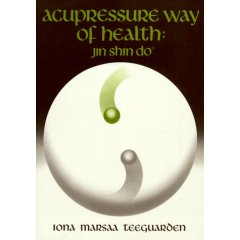
|
Pioneering the Bodymind Approach
One reason why Jin Shin Do® Bodymind Acupressure® is effective for stress release is the emotional release that comes with releasing the body's armor - the chronic tension which builds over the years, for example as a result of trauma. Part of the release process is developing an increasing awareness of this armoring, and of the bodymind connection.
It is hard for me to think of the body and psyche as separate, since for more than half my lifetime I have observed their inherent oneness. Experiencing that oneness more fully is a continuing adventure. I was just twenty one when, because of a treatment from Jean-Claude Thomas for a chronic digestive problem, I discovered that allowing and exploring my feelings and emotions could effect a cure when physical techniques alone had not worked. Shortly thereafter, when receiving acupressure, I noticed that breathing into the tense and sore points facilitated their release. (Just a couple years later, I more fully appreciated the power of breathing techniques for moving through pain - specifically, the different stages of childbirth!) I began giving acupressure sessions (for $8!) at age twenty three. At first, I was surprised by how often clients would spontaneously express feelings, and all along I have been fascinated by the coincidental release of muscular tensions.
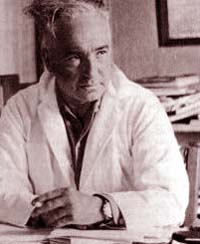
|
Early on, I was excited by the idea that acupressure point combinations could help release the rings of chronic muscular tension, or segmental armoring, described by Dr. Wilhelm Reich. It seemed to me that segmental theory could also inform the practice of acupressure, particularly in regard to emotional release and transformation. Gradually, I found many correlations between Wilhelm Reich's segmental theories and the emotions traditionally associated with the meridians of acupressure. I began to envision a bodymind release method synthesizing these Eastern and Western approaches, and utilizing not only acu-points, but also breathing and verbal suggestions, along with Qigong exercises (which I then called 'Taoist yoga'). |
Throughout the seventies, I gradually learned to encourage the client's openness to feelings and images during point release. In 1979, to better understand how to help process and transform the emotions which came up during sessions, I returned to school, receiving an M.A. in psychology in 1980 from Antioch University and in 1983 becoming a Licensed Marriage, Family and Child Counselor (now Marriage and Family Therapist). During this process, the development of JSD was particularly influenced by Rogerian and Jungian ideas, as well as by systems theory.
One simple reason why JSD can be easily integrated with psychotherapy is that the work is done with clothes on. I never saw the need for clients to take their clothes off, probably because all of my experiences of acupressure and acupuncture were with clothes on. Also, I thereby neatly avoided the possible mixed messages that can come with nudity. Relative to other forms of bodywork, JSD is more passive or receptive; rather than manipulating the body, the practitioner is using a direct pressure at the points to bring the client-s awareness into the body. There is time for the client to feel into the tension and be open to any feelings, emotions or images that may arise. The verbal Body Focusing Technique is used to facilitate the process of listening to the inner Self. The body thus becomes a mandala - a way into the unconscious mind.
In my original conception of Jin Shin Do, I saw it as an evolving technique. During the eighties, I was obsessed with its development, particularly as a bodymind therapy. The result of this research was the publication in 1987 of The Joy of Feeling: Bodymind Acupressure®. This 364-page book explores the relationship between the twelve organ meridians and the various emotions and feelings. These bodymind correlations are illustrated through numerous case stories of emotional transformation.
The key concept in The Joy of Feeling is the 'Emotional Kaleidoscope,' a Five Elements-based diagram including a hundred different feelings and emotions within five spectra of emotional polarities, each related to a pair of organ meridians - except that one spectrum is related to two pairs (the 'Fire' meridians). Each spectrum includes a yin/yang polarity: one or two of the classic 'extreme emotions' and the 'synergic feelings' into which they naturally change. Also included are the related polarities of 'distressed feelings,' which develop when expression of the primary emotions is squelched, and which tend to correlate with hypoactive or hyperactive conditions of the related meridians.
If we start from the Taoist observation that life consists of polarities, as illustrated by the yin-yang symbol, then it is easy to see that our feelings too are polar in nature. At its extreme, an emotion will turn into its opposite, just like night turns into day and winter into summer. For example, anger (related to the Liver Meridian) can be transformed into assertion and the will to become that Self that you truly are - or it can be turned inward, as guilt, or outward, as resentment. When guilt is dominant, resentment will be lurking underneath, and vice versa. Similarly, fear (related to the Kidney) can be transformed into resolution and willpower, or can instead become chronic and lead to a general timidity. In that case, there will also be an opposite tendency to direct the fear outward, in the form of suspicion and mistrust.
When we were children, we may have repressed our emotions because of external prohibitions; as adults, we may have continued to repress our feelings because of having internalized these prohibitions, and because various traumas may have reinforced the earlier wounds. As adults, we have the choice to continue repressing our emotions, or to reclaim the ability to feel our feelings. We can choose to be in touch with our feelings, and to learn to enjoy their mobilizing power. (E-motion is energy in motion). But we don't get to choose to feel just one feeling, not even joy. We get to choose to feel or not to feel; if we choose to feel, we will feel our sadness as well as our gladness. . . but isn't that worthwhile, in order to feel things like joy, appreciation of the gift of life, and awe at the beauty of nature? Also, it's a lot more fun than depression, which is a lack of feeling. JSD can assist the choice to feel, and the ongoing process of emotional transformation.
I did not set out to study psychotherapy; that evolved from discovering that feelings often come up during JSD sessions, and deciding that I would do well to find out what Western psychology had to teach me about dealing with feelings. Several years later, I studied hypnotherapy for similar reasons. After discovering that JSD clients exhibit many signs of altered or 'trance' states, the logical response seemed to be learning what Milton H. Erickson, the world acclaimed hypnotherapy master, had had to say about working with trance states (by studying with Dr. Jeffrey Zeig, director of the Milton H. Erickson Foundation).
This led to my emphasis on 7 principles of communication with the unconscious mind, which are briefly described in chapter seven of my newest book, A Complete Guide to Acupressure, first published in 1996 and revised in 2002. (The Revised version is even more complete; the four new chapters include two by me, on JSD as a tool for aiding recovery from Posttraumatic Stress Disorder and on the Five Elemental Processes as a practical guide to a harmonious relationship with Nature, both around and within us.)
Actually, all three of my books emphasize the bodymind connection. The last chapter of Acupressure Way of Health, 'An Ancient, New Age Approach to the Emotions,' introduces the extreme emotions and is like an introduction to The Joy of Feeling. The last two chapters of the Revised Complete Guide to Acupressure, on abuse issues and recovery from trauma, are like an epilogue to The Joy of Feeling.
The Growth of a Grassroots Movement
While these ideas were beginning to germinate, a seminal experience occurred in early 1974. I was visiting Dr. Shui Wan Wu on a Sunday, and she asked me to take the phone when the husband of a client called. A migraine patient, she was in severe pain. I was relieved to see Dr. Wu nod in assent as I told the man how to find and hold three acu-points - JSD #22, 44 and 13 (which, in the modern acupuncture numbering system, are GB 20, GB 39 and GB 34). The next day, impressed that the full-blown migraine had gone away within just two hours, he made appointments for his wife to have acupressure sessions with me, in addition to the acupuncture treatment from Dr. Wu. This experience inspired me to teach acupressure, so people could learn to help their families and friends with this art.
In 1971, John Lilly had arranged the first class taught by Ron Teeguarden and I - an auspicious beginning! It was held in the mountains near LA, and there was a float tank! This was just an introductory class; while Mary lived in Southern California, we referred students to her. After my son's birth in 1973, we taught in our home in Venice. Mary said we could teach the JSJ patterns, but not Jiro Murai's drawings of the "flows." I anyway preferred the acupuncture drawings, and before long I was also teaching point combinations different from those taught in JSJ, especially for the 12 meridians. In fact, the three points for migraine relief mentioned above came from acupuncture theory. By the time I returned to L.A. from Japan, in 1976, I was teaching different and more points than JSJ, and different point combinations. Together with other differences described at the beginning of this article, the result was a technique that is now radically different from JSJ. In 1975, Qigong Master Sung Jin Park suggested the name 'Jin Shin Do' for it, and that's the name that I have used ever since.
In 1979, I began to teach annually on the East Coast, initially at Ohashi's center in New York (and he taught at mine in Santa Monica), later at the Open Center, and after that in the Berkshires where Senior JSD Teacher Deborah Valentine Smith organized classes. In the eighties I began teaching in other states, Europe (Germany, Norway, Sweden and Switzerland), and Canada (British Columbia).
My vision is of people everywhere being able to help each other with this art. To promote this, the Jin Shin Do® Foundation for Bodymind Acupressure® was set up in 1982. The international JSDF directory now includes about 120 Authorized Jin Shin Do® Teachers (Jin Shin Do® Trademark Licensees) and about 400 Registered JSD Acupressurists throughout the U.S., Canada, Europe and Australia.
To protect the quality of the art, life showed me that it was necessary to register 'Jin Shin Do' as a trademark, which is what the ® means. 'Jin Shin Do' was entered on the Principal Register of the U.S. Patents and Trademarks Office in 1983, and the JSD Encircled Tree logo and "Bodymind Acupressure" were registered later, in the U.S. and elsewhere. Since 1985, 'Jin Shin Do' was registered in Canada, Germany, Netherlands (Benelux), Norway, Sweden, Switzerland, the United Kingdom, and then throughout the European Community (CTM registration, which includes 25 countries), and later in Australia and New Zealand. Registration elsewhere is pending. I do protect the use of the name 'Jin Shin Do,' and I stop people from printing my copyrighted JSD materials. Among those who did so was a man in the Netherlands (now deceased), who claimed to have learned JSD from three doctors in Japan, including Dr. Serizawa! Not surprisingly, Dr. Serizawa (who wrote the book, "Tsubo: Vital Points in Oriental Therapy") said that he did not teach Jin Shin Do, and that this man was a stranger to him! In another case, the problem was ignorance, not fraudulent intent, but we had to have a book withdrawn from publication in the U.K., because of trademark and copyright infringement which resulted in misrepresentation of Jin Shin Do. See: Important Information about Trademarks.
A manifestation of the strength of the JSD network was the publication in 1996 of A Complete Guide to Acupressure (revised in 2002). This 341-page book contains chapters by myself and a dozen Senior JSD Teachers. Editing a book of this magnitude was far more work than I expected. Like my other two books, it took me nine years to write it - and an additional year to write and edit new chapters for the revised edition - but the resulting body of information was well worth the effort. This book is a storehouse of knowledge, in three areas: Key Theories, Bodymind Processing Skills, and Practical Applications.
The story goes on. In 1987, I moved to California's Central Coast, teaching in Palo Alto while living in a tree house in the redwoods. (Really! It was built around the stump of a 2000-year-old redwood tree.) In 1996, I moved to the 4-acre "Cando Ranch," where I had pastures for my horses and an extra house for JSD classes - and then discovered that I had to organize the neighborhood in order to clean up a badly neglected creek in the flood plain! I also discovered that I love living and teaching in the country.
In 2002, I joyfully moved back to Southern California, where I teach JSD classes at the 17-acre "A Ranch." Besides the classroom, there are three houses for students, hiking trails, lots of animals (horses, cats, dogs and wild critters), and many oak trees, including a very old giant which provides a heavenly place for students to do Pal Dan Gum (Qigong stretching and energy balancing exercises). I describe "A Ranch" as being "where the blacktop ends and the West begins," because when you drive up to this ranch, it feels like you have stepped back in time to the old West -- and even farther back, when you see the ancient Coahilla Indian pictographs outside the classroom, and the nearby grinding stones. |
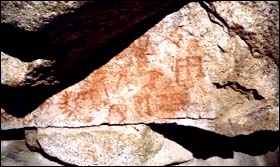
|
Copyright ©
1999 - 2013 Jin Shin Do® Foundation.
All rights reserved.
![]() Top of Page
Top of Page
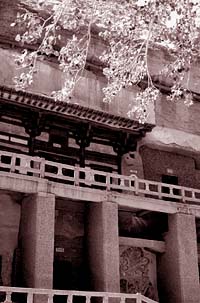 Jin Shin Do® acupressure descends from ancient techniques that were developed in the Taoist and Buddhist temples of China and then brought to Japan, where they merged with indigenous techniques. In the early nineteen hundreds, Jiro Murai rediscovered and developed these techniques, calling his art Jin Shin Jitsu (also transliterated Jyutsu). Unfortunately, it is almost unknown in Japan today, because in post-war Japan the younger generation was fascinated with Western things. Jiro Murai's study groups consisted of elderly men and, sometimes, two youngsters: Mary Iino Burmeister, who was in Japan during the Occupation and brought what she learned back to California, and Haruki Kato, who became an acupuncturist and taught Jin Shin Jitsu to a few students. When I was looking for relief from back pain (due to scoliosis) in 1971, Jacques de Langre told me about Mary. I had treatments and took classes in her San Fernando Valley home in 1971-72, and audited a class in 1975 after she moved to Scottsdale, Arizona. The next year, I studied with Dr. Haruki Kato in Japan; I'll say more about that later on.
Jin Shin Do® acupressure descends from ancient techniques that were developed in the Taoist and Buddhist temples of China and then brought to Japan, where they merged with indigenous techniques. In the early nineteen hundreds, Jiro Murai rediscovered and developed these techniques, calling his art Jin Shin Jitsu (also transliterated Jyutsu). Unfortunately, it is almost unknown in Japan today, because in post-war Japan the younger generation was fascinated with Western things. Jiro Murai's study groups consisted of elderly men and, sometimes, two youngsters: Mary Iino Burmeister, who was in Japan during the Occupation and brought what she learned back to California, and Haruki Kato, who became an acupuncturist and taught Jin Shin Jitsu to a few students. When I was looking for relief from back pain (due to scoliosis) in 1971, Jacques de Langre told me about Mary. I had treatments and took classes in her San Fernando Valley home in 1971-72, and audited a class in 1975 after she moved to Scottsdale, Arizona. The next year, I studied with Dr. Haruki Kato in Japan; I'll say more about that later on.